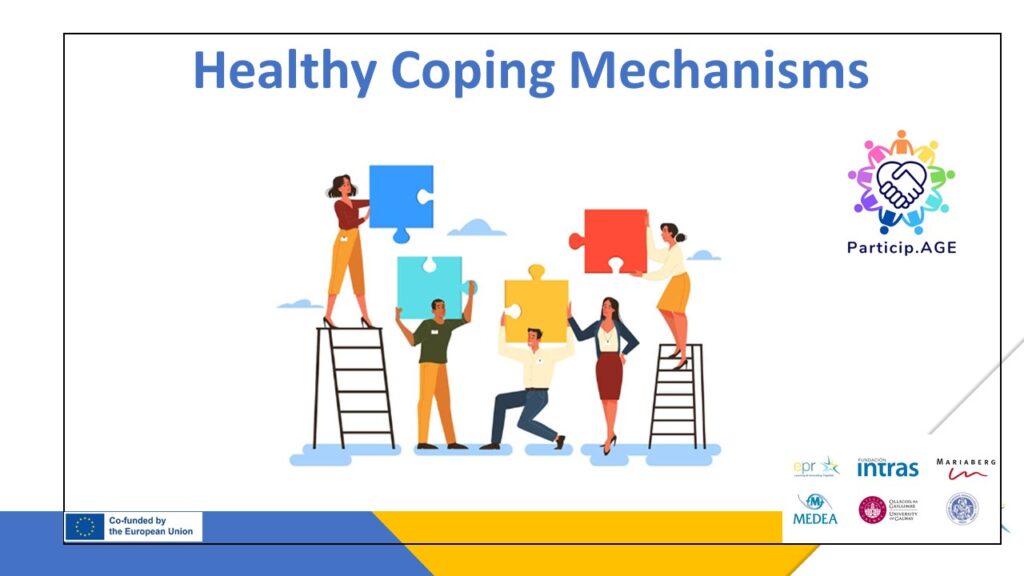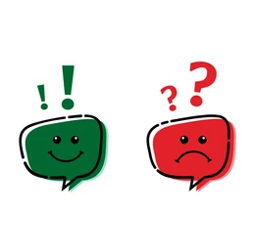
Coping
- Coping is a key protective factor of resilience.
- It describes how we deal with stress, strain and crises, which can be deduced from the name.
- The English word “to cope” means “to manage” or “to deal with”.
- Every person is individual. It is therefore reasonable to assume that each person finds their own way to reduce stress.
- Just as there is an infinite variety of people, there are nevertheless patterns in human behavior. Stress is a biological program that is anchored in all of us. After all, it serves to ensure survival in extreme situations.
Coping Strategies
Coping strategies are the patterns we use to avoid stress.
They tend to be short-term in nature and can vary depending on the stressor.
Not all of us constantly use all coping strategies identified by research. We tend to use certain strategies in certain situations.
This is how coping styles are created.

There are some key differentiating factors
- Activity orientation:
- Engagement coping describes the active confrontation with the stressors
- Disengagement coping describes the avoidance of a problem.
- Timing:
- Reactive coping is the use of coping during or after the stressful stimulus,
- Proactive coping means preparing for potential stress.
For example, if there is a conflict at work, you tend to actively deal with the conflict after it has occurred.
Your coping style would then be more problem-focused, reactive and engaged.

How can we strengthen coping?
Good stress management and a high level of resilience result from the ability to know and adopt many different coping strategies.
Knowing your own preferences will help you to make your coping styles more flexible.
There are any different coping strategies, which may be more or less effective, depending on the individual.

How can we strengthen coping?
Active Coping:
This strategy is probably the most comprehensive. Active coping can be anything that deals directly with the problem, the stressor, the burden.
Planning:
§This is a proactive coping method, which can be both problem-focused and emotion-focused. It involves anticipating possible stressors and possible reactions in order to deal with the stress. Example: Taking a first aid course is a classic example of coping by planning
Coping styles
Suppress competing activities:
- This coping strategy is an intermediate step or an accompanying strategy to active coping. It involves a functional focus on the problem. It means refraining from any activities that prevent you from actively coping with a stressful situation.
- This means you step away from other demands on your time, allowing you to focus on addressing the stressful situation.
Positive reappraisal:
- This is one of the best-studied coping strategies. It does not tackle the problem directly, but rather the evaluation of the problem, thereby enabling stress regulation. That is, you may reconsider the problem and identify some positive aspects or silver-linings. This is similar to a “glass half-full” approach.
Restraint:
- This is an example of disengagement, as it involves initially moving away from the stressor instead of taking action. However, this strategy is also an intermediate step before active coping. Restraint coping describes waiting for the right time to act.

Humor:

This is an emotion-focused strategy to emotionally distance ourselves from the problem. We try to turn a stressful situation around and then see the absurdity in the stressful stimulus.
Social support (emotional and instrumentalized):
- Social support is an enormously important protective factor in terms of stress regulation and resilience. Social support can be emotional or instrumental e.g. if you ask a friend to help you solve a problem or seek specific advice, this is instrumental social support.
Denial:
- This is a coping option that can be both problem-focused and emotion-focused. As the name suggests, it involves denying the existence of the stressor or refusing to acknowledge the influence of the stressor. This type of coping is generally regarded as dysfunctional, because problems rarely go away on their own.
Behavioral withdrawal:
- This also involves disengagement, although it is more a case of proactive coping. Proactive in the sense that efforts are not even made, or the achievement of a goal is abandoned if a potential stressor is associated with it.
Using coping strategies: Make it flexible
- We all have access to these coping strategies. However, we do not use them all equally strongly and frequently.
- The smaller our toolkit of coping strategies is, the more likely we are to become irritated and the more likely we are to stumble.
- In order to protect ourselves, we need as broad a selection of coping mechanisms as possible. One way to achieve this flexibility is to learn to use different coping strategies

Case studie
Mental health social workers are exposed to high levels of occupational strain and stressors.
Methods:
The researchers analysed a variety of studies that addressed stress and coping strategies among mental health social workers. They collected data from various sources to obtain a comprehensive picture of the situation.
A systematic review of stress among mental health social workers
Reasons for Stress:
High workload: An excessive workload and high case numbers were identified as the main causes of stress.
Emotional stress: Dealing with traumatised and highly stressed clients led to considerable emotional stress.
Organisational factors: Poor working conditions, insufficient support from superiors and a lack of resources exacerbated stress.

Effects of stress:
Burnout: persistent stress often led to burnout, characterised by emotional exhaustion, depersonalisation and reduced personal performance.
Health problems: High levels of stress have been linked to physical and mental health problems such as sleep disorders, anxiety and depression.
Coping strategies:
Individual coping mechanisms: these included techniques such as regular physical activity, mindfulness exercises, hobbies and leisure activities to relax.
Social support: socialising with colleagues, receiving emotional support and feeling part of a team were highlighted as important coping strategies.
Supervision and professional support: Regular supervision and professional support from superiors and mentors contributed to coping with stress.
Example: Service Provider A
- Service Provider A work hard to help their APWID clients.
- The workload is high, with many competing demands on staff time. This type of work brings emotional stress, with challenging organisational conditions e.g. split-shift work. Employee burnout and health problems are a high risk.
- What are some steps that Service Provider A can put in place to try to help their employees?
- Sport: Opportunities for physical activity – running, hiking, soccer, volleyball
- Social and cultural: Shared interest groups – music, yoga, bible study, cooking
- Life skills courses: Healthy eating, stress reduction, meditation, time management
- Workplace relations support: Collegial counselling, conflict management working group
- Therapeutic help: Counselling, addiction support, reintegration support
Summary
In summary, there is no one better strategy, there is only one that is more suitable for your situation. And you are the only person who can decide that.
It is helpful to be aware of the different styles of coping, and think about how you can apply them.

